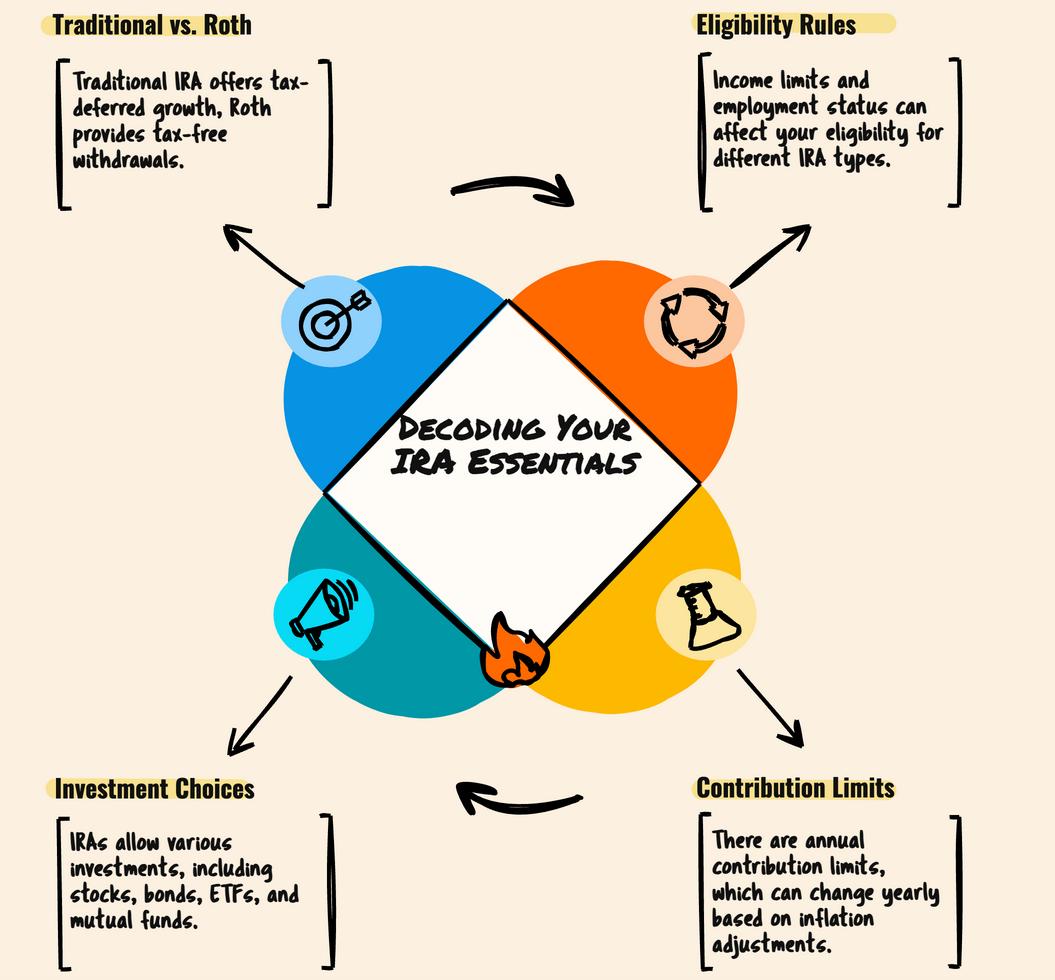You should consider an IRA rollover when you want to transfer funds between retirement accounts, like from a 401(k) to an IRA, to keep your investments tax-advantaged. The best time is when changing jobs or seeking better investment options. To do it right, choose a direct transfer or deposit the funds within 60 days if doing an indirect rollover, and remember there’s a limit of one indirect rollover per year. Keep these tips in mind to maximize your savings potential.
Key Takeaways
- Roll over funds when changing jobs, consolidating accounts, or seeking better investment options, ensuring they stay tax-advantaged.
- Use direct rollovers for safety and simplicity; avoid multiple indirect rollovers within a year to prevent tax issues.
- Complete indirect rollovers within 60 days to avoid taxes and penalties; only one such rollover allowed per year across all IRAs.
- Understand tax implications: traditional to traditional IRAs are tax-free, but conversions to Roth may incur taxes.
- Start with a direct transfer or timely deposit to maintain tax benefits and avoid unnecessary costs or penalties.

Are you considering moving your retirement savings from one account to another? If so, understanding IRA rollovers is key to making a smooth and tax-efficient transfer. An IRA rollover involves shifting funds from one tax-qualified retirement account to another while generally maintaining their tax-deferred status. This process can help you consolidate accounts, broaden your investment options, and plan for a more secure retirement. There are two main types of rollovers: direct and indirect. A direct rollover occurs when the funds are transferred directly between financial institutions or retirement plans, with no limit on how often you can do it and without immediate tax consequences. You simply ask your current provider to send the money straight into your new IRA account. On the other hand, an indirect rollover involves receiving the distribution first, then depositing it into another IRA yourself. To avoid taxes and penalties, you must complete this deposit within 60 days. Keep in mind, IRS rules restrict you to only one indirect rollover per year across all your IRAs, including traditional, Roth, SEP, and SIMPLE accounts. If you miss this window, the distribution becomes taxable, and if you’re under 59½, you might face a 10% early withdrawal penalty. Trustworthy direct rollovers and trustee-to-trustee transfers don’t have this limitation, making them a safer choice for frequent moves. Timing is essential—if you miss the 60-day deadline, you’ll owe income taxes on the amount, and early withdrawals could cost you more. In certain circumstances beyond your control, the IRS may waive this deadline, so it’s worth exploring if you face unexpected delays. When it comes to tax implications, rollovers help preserve the tax-deferred status of your savings. Moving funds from a traditional IRA or 401(k) into another traditional IRA doesn’t trigger immediate taxes. However, converting a traditional IRA into a Roth IRA is considered a Roth conversion, which may result in a tax bill for the year of the transfer but offers tax-free withdrawals later. The main reasons for doing a rollover include consolidating multiple accounts to simplify management, reducing fees, accessing more diverse investment options, and enabling conversions like Roth rollovers for potential long-term benefits. To execute a rollover properly, start by requesting a direct transfer from your current plan to your new IRA, ensuring the process is seamless and tax-free. If you opt for an indirect rollover, remember to deposit the funds into the new IRA within 60 days to avoid taxes and penalties. It’s important to note that understanding these rules and options can help you make informed decisions that maximize your retirement savings and minimize unnecessary taxes or penalties. Additionally, knowing about IRA rules and regulations can assist you in avoiding common pitfalls and ensure compliance with IRS requirements.
Frequently Asked Questions
Can I Rollover Multiple Retirement Accounts Into One IRA?
You can rollover multiple retirement accounts into one IRA if they share the same tax characteristics and ownership. Pre-tax IRAs and 401(k)s can usually be combined, but SEP and SIMPLE IRAs have restrictions. Make sure to verify plan rules and perform direct transfers to avoid taxes or penalties. Consolidating simplifies management, reduces fees, and helps you better track your retirement progress, but always consider tax implications first.
What Are the Tax Implications of an IRA Rollover?
Thinking about an IRA rollover? Keep in mind, if you follow the 60-day rule, you avoid taxes on the transferred amount. However, missing this window turns the rollover into a taxable event, possibly with penalties if you’re under 59½. Remember, indirect rollovers may withhold 20%, and only one rollover per year is allowed. Direct rollovers are tax-free, but converting to a Roth IRA triggers immediate taxes.
How Long Do I Have to Complete a Rollover?
You have 60 days from the date of your IRA distribution to complete the rollover. This deadline is strict and doesn’t get extended if it falls on a weekend or holiday. If you miss it, the IRS considers it a taxable distribution, possibly with penalties. In some cases, you might qualify for a waiver if circumstances are beyond your control, but acting quickly is always best to avoid issues.
Are There Penalties for Early IRA Rollovers?
They say, “Better safe than sorry,” and that’s especially true with IRA rollovers. If you withdraw early, you might face a 10% penalty plus income tax unless you meet specific exceptions, like first-time home purchases or education costs. To avoid penalties, consider direct transfers or make sure you roll over within 60 days. Stay informed, keep good records, and consult IRS guidelines to protect your savings.
Can I Do a Rollover if I’M Already Retired?
Yes, you can do a rollover even after retiring. Retirement doesn’t prevent you from rolling over your IRA or employer plan distributions. You can consolidate accounts, access broader investment options, or manage RMDs more efficiently. Just remember, indirect rollovers are limited to one per 12 months, and you need to complete them within 60 days to avoid taxes. Trustee-to-trustee transfers are unlimited and don’t have this restriction.
Conclusion
So, next time you’re considering an IRA rollover, remember it’s more than just a financial move—sometimes, it feels like the universe nudges you in the right direction. When you plan carefully and follow the proper steps, everything seems to fall into place effortlessly. Coincidences happen, but your smart choices make them work in your favor. Trust your instincts, stay informed, and let the stars align to guide your retirement journey smoothly.










